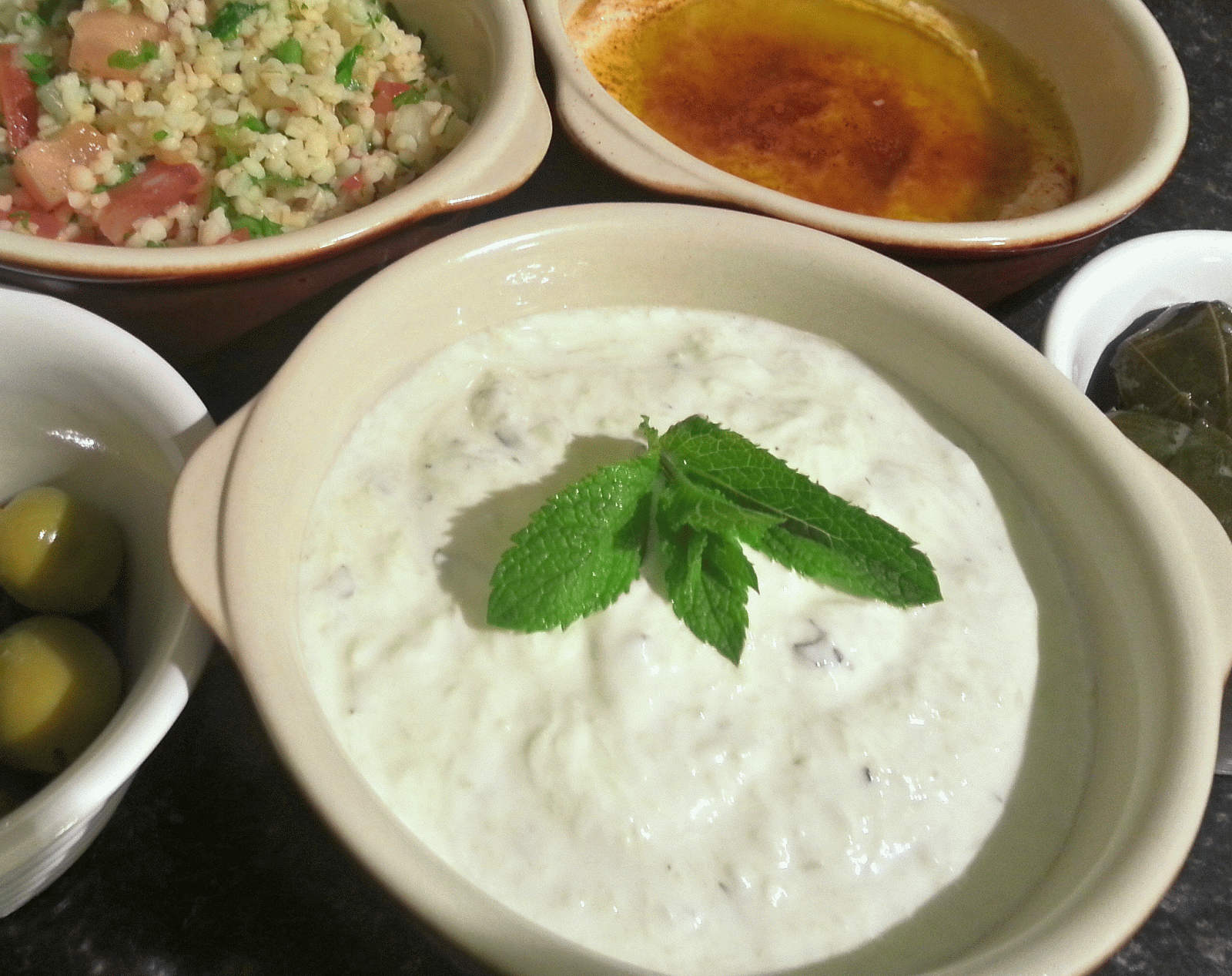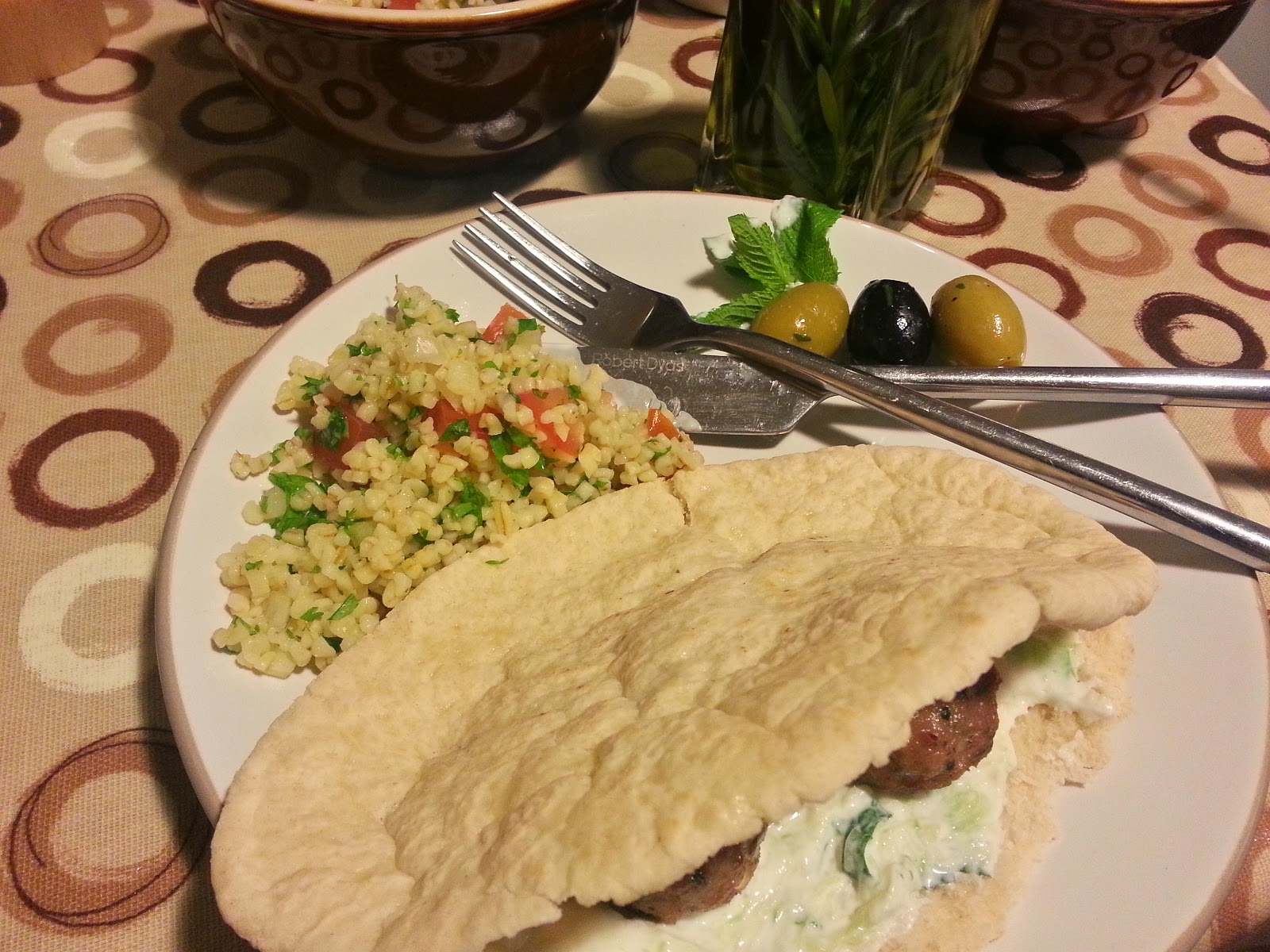The Chinese meatball I titled it because so I believed when I was in Japan, but I've never seen them in Chinese restaurant... May be it's a Japanese invented Chinese like food?
Anyway, it's really tasty. Sweet say sauce dressing thickly cover over meatballs, well coated like a shell, but the inside is full meat taste, juicy and hot. Unstoppable.
Ingredients for 4 people:
for meatball
- 1kg minced pork
- 2 tsp minced garlic
- 1 tsp minced ginger
- 1 tsp sesame oil
- 1 tsp salt
- 1 Tbsp sake
- 1 Tbsp soy sauce
- 2 tsp potato starch
- 1 onion
- a bunch of green leaf vegetable such as Choi-Sum, Pak-Choi, Broccoli etc.
for sauce
a. 1/8 cup of Shal Hsing (Chinese liquor)
a. 1/4 cup soy sauce
a. 1/2 cup water
a. 3 Tbsp sugar
a. 1 Tbsp potato starch
- 2 tsp rice vinegar or good white wine vinegar
- 1 Tbsp sesame oil
b. 1 tsp minced garlic
b. 1 tsp minced ginger
b. 1 tsp minced red chili
b. 1 Tbsp minced leek
- some flour to coat meatballs
- enough vegetable oil for deep fly
- a kettle of boiled water + a pinch of salt for green leaf veges
* A Chinese wok or a deep and large flying pan.
* 2 metallic strainers
* One large slotted spoon - metal one is better
* One wooden spoon.
* A pair of cooking chopstick is nice to have.
* Steamed rice to go with
Method:
1. Put a kettle of water to boil. Put all a. sauce ingredients in a bowl together, mix them well. Put a metal strainer on an empty sauce pan (large enough to drain all oil from wok), put a kitchen paper on the strainer and set a said. Cut an onion into quarters, peel them in few layers each, then cut them into about 2-3cm square pieces. Prepare a small bawl or plate with some flour (about half a cup should do). Wash well and cut green veges into about 5 cm length (if broccoli, separate them in to single blanches)
2. Put all meatball ingredients in a large bawl then mix them by your hand for about 3 minutes.
3. Make them into about a table-tennis ball size balls (a bit smaller than a golf ball if you don't know table-tennis ball...) in your hand (below picture shows a half of them).
4. Place a Chinese wok (or deep and large flying pan) on a hob with enough vegetable oil (well, no more than a half of wok for your safety. See the later picture).
5. Start heating the oil with medium-high heat. Good way to see the temperature is using a pair of cooking chopsticks made of bamboo; if the bubbles comes out from the chopsticks tips quietly when you put them into oil, that's about it. If bubbles comes out in rush then that's too hot, stop the heat for a bit of time. Or else, you can drop a little piece of minced meat; if the meat touch the bottom and gently comes up with bubbles, that's also good. Once oil gets enough hot, coat the prepared meatballs one by one with a thin layer of flour (rolling the balls in a tray or ball of flour), then drop in to the oil. (Don't put them too much in one -go; you may need to do in batches).
6. Once you put enough meatballs in, then don't touch but leave them until the top of balls start to change colour, about 5 minutes. Then using a large slotted spoon, scratch out all balls from bottom of wok. Stair them and turn them over wait for about 3 minutes.
7. Cooked meatballs will start to float. If difficult to see then wait until they start to get light blown like onion skins, and take them out to metallic strainer (the meatball colour gets darker after dry, like in below picture).
8. Once all meatballs are deep-flied, then put onion pieces in to the same wok next. Be careful for your hand! Onion cooks very quickly; as soon as bubble start to up around the onion pieces, you can scoop them out by a slotted spoon, drain as much oil as possible over the wok then put them on the meatballs on the strainer. Stop the heat.
9. Move the strainer aside (on a plate), then carefully drain the oil into the sauce pan where strainer was on. Clean the wok and put it back on a hob, fill it with boiling water from kettle, add a pinch of salt in. Turn the heat back to medium-high.
10. If the water start boiling again, put the green leaf vegetables in. Boil them just lightly until leafs start to change colour; about a minute if Choi-Sum or Pak-Choi, about 3 min if broccoli. Drain them out on another strainer.
Now the last part, all goes very quickly from here...
11. Put the wok back on a hob, put a table spoon of sesame oil, then toss all b. ingredients in the oil, then turn the heat to max. Stir them with a wooden spoon.
12. When some small bubbles come around minced garlic, mix the bawl of a. ingredients one more time then quietly pour that into the center of wok. Continue stirring the sauce by wooden spoon. Try scratching the bottom as it gets sticky from bottom.
13. The sauce will get thicken by the potato starch in a minutes or so, then put all onions and meatballs back into the wok, quickly turn all thing in wok over by the wooden spoon while moving the wok back and forth. You will see it's ready when all meatballs get coated by the shinny sauce. Put them out to a serving dish.
14. Now place the wok back again on a hob, pour just a bit of water (like 1/4 cup) then place all green leaf vegetable in, stair fly them until all water to evaporate. Put the vegetable on a side of meatballs.
15. Serve them hot, go well with steamed rice.


















